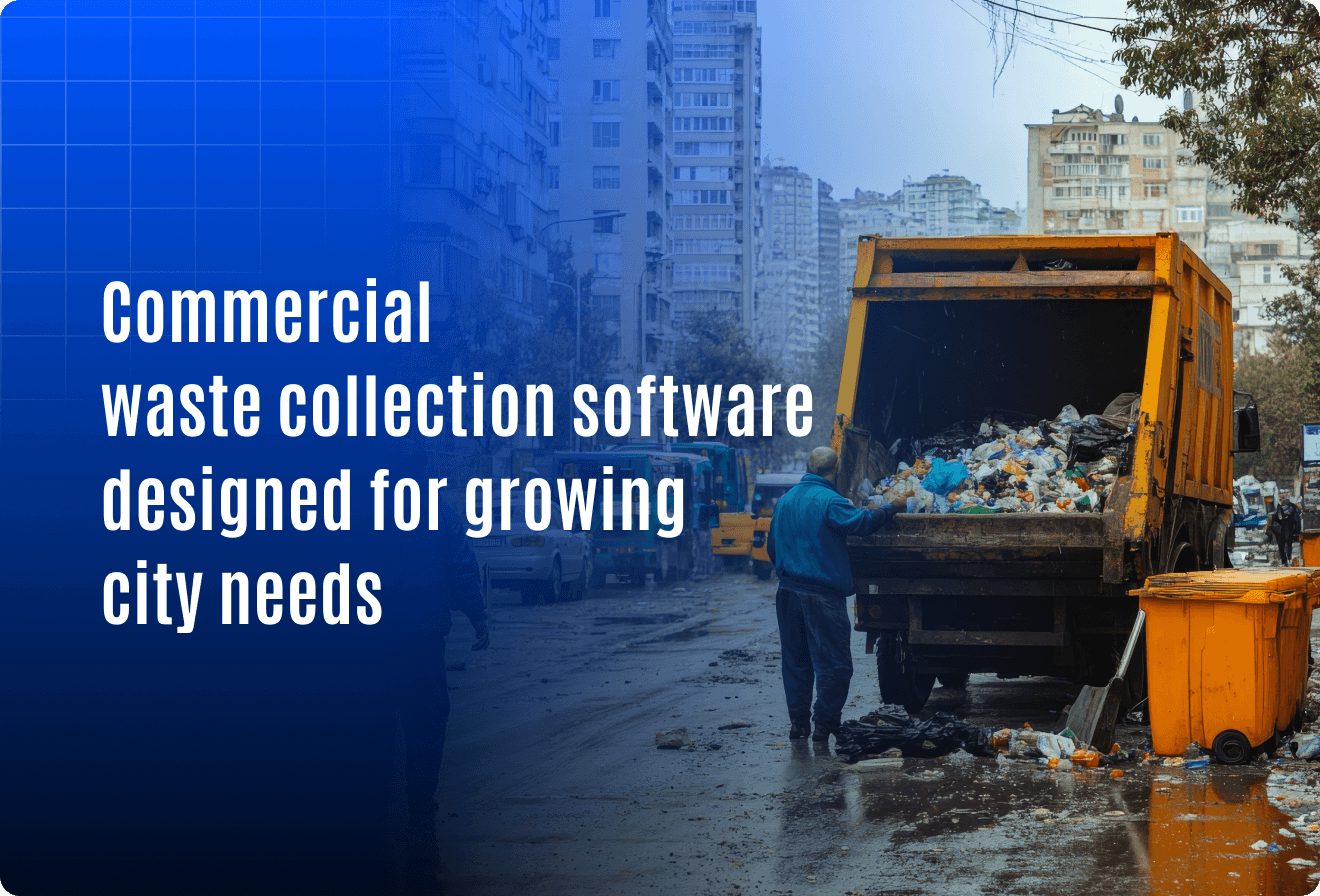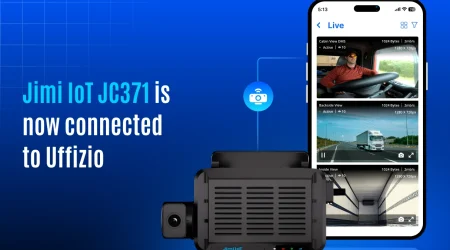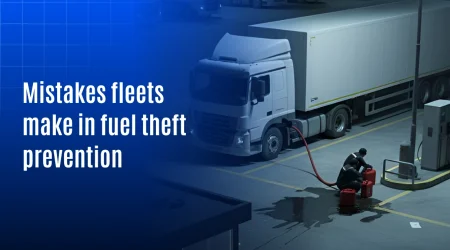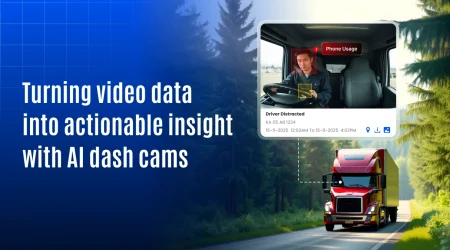What makes commercial waste collection software essential for urban growth

Commercial waste collection is under pressure worldwide. Offices, supermarkets, hotels, and factories are producing more waste than ever. In the United States alone, commercial establishments generate over 160 million tons of solid waste every year. Europe adds another 130 million tons annually.
Yet many cities still depend on manual methods to manage daily collection. Tasks are tracked on paper. Routes are fixed without checking bin status. Supervisors have no live updates from the field. These gaps lead to missed pickups, fuel waste, and rising complaints from businesses.
To fix this, municipalities and service providers are shifting to software. Commercial waste collection software is helping them plan better, respond faster, and scale operations as cities grow.
Why is commercial waste harder to manage than residential waste
Managing commercial waste isn’t just about picking up garbage. It involves higher volume, stricter timelines, and greater public visibility. Here’s what makes it more complex than residential waste:
- Larger volume per location
A single restaurant or supermarket can generate more daily waste than several homes combined. - More frequent pickups are needed
Overflowing bins in business zones can lead to hygiene issues and customer complaints quickly. - A greater variety of waste types
This includes food scraps, packaging, dry waste, and recyclables, which often need separate handling. - Higher service expectations
Businesses expect prompt and clean waste removal. Delays can disrupt their daily operations. - Irregular or changing schedules
Events, business hours, or peak footfall often shift collection needs at short notice.
What slows down commercial waste collection in growing cities
Even with enough manpower and vehicles, many cities struggle to run commercial waste collection smoothly. The issue often lies in poor coordination and lack of real-time visibility.
Here are the common roadblocks:
- Manual scheduling with no central system
Contractors often rely on printed checklists or verbal instructions, which leads to confusion. - No live tracking of bin status
Managers can’t see if a bin is full, already collected, or skipped unless someone reports it. - Lack of accountability
If a complaint is raised, there’s no quick way to verify what happened or who was responsible. - Static routes that ignore real-time needs
Trucks follow the same path daily, even if certain bins don’t need pickup or others are overflowing. - Multiple contractors working in silos
Without a unified system, different vendors work independently, making monitoring difficult for authorities.
How software brings structure to daily collection routines
In commercial zones, waste collection is not just about moving from one bin to another. It requires accurate planning, on-time execution, and constant communication between teams. Without a clear structure, small issues quickly grow into major disruptions. Waste piles up. Businesses complain. Operations fall behind.
Commercial waste collection software helps avoid all of this. It gives managers and field teams the tools to plan, assign, and monitor work in a way that is simple but highly effective.
Here is how it transforms the routine:
- Collection schedules are created based on actual needs
Instead of sending trucks on the same route every day, the software allows teams to plan routes based on bin usage, collection frequency, and zone priority. Managers can adjust the schedule depending on the time of day, foot traffic, or expected waste load. This reduces unnecessary trips and ensures each visit is meaningful. - Collectors know exactly what they have to do before starting the day
Each waste collector receives a clear task list on their mobile application. It shows which bins they need to visit, where they are located, and in what order. They also see special instructions for bins that require extra attention. This removes confusion and helps them stay focused on completing their route without delays. - Real-time updates help teams stay connected
If a collector finds a bin missing, locked, overflowing, or inaccessible, they can update the status instantly through the app. This information reaches the manager in real time, allowing them to reassign tasks or take action immediately. No time is wasted on follow-up calls or reporting errors after the shift ends. - Supervisors get full visibility without going to the field
The dashboard shows supervisors which bins have been collected, which are still pending, and the current location of the vehicle. If a task is delayed or skipped, the system automatically flags it. This allows them to manage multiple teams without needing to be physically present. - Every action is recorded and traceable
The system maintains a record of each trip, each task completed, and each issue faced on the field. This builds accountability within the team. If a complaint is raised later, it is easy to check the history and respond with accurate information.
By bringing this level of clarity and control into daily operations, the software helps cities and contractors handle commercial waste collection with confidence. It ensures that no bin is missed, no trip is wasted, and no issue is ignored. That structure is what growing cities need to keep commercial zones clean and functioning smoothly.
Why real-time monitoring matters in commercial zones
For municipalities and waste management contractors, commercial zones are the most demanding part of any service area. Business owners expect fast, reliable pickups. Missed bins or delays often result in escalations. These situations can harm service reputation and lead to financial penalties in contract-based environments.
That’s why real-time monitoring has become a must-have. It gives supervisors and service providers full control over their daily operations, helping them deliver consistent performance in high-pressure environments.
- Improves operational visibility for managers and contractors
Supervisors can view live vehicle locations and monitor trip progress from a central dashboard. This helps in managing multiple field teams across large commercial areas without being physically present. - Reduces escalations from business zones
If a bin is skipped, damaged, or reported late, the system flags it instantly. Managers can respond before the client files a complaint. This protects service-level agreements and avoids friction with stakeholders. - Helps contractors prove service delivery with digital records
Every collection activity is time-stamped and geotagged. This creates proof of service for each bin, which is especially useful when working with large commercial clients or government contracts. - Speeds up decision-making during field issues
If a driver or collector reports a problem, managers receive real-time updates and images. They can make quick adjustments or assign backup teams immediately. This reduces delays and helps maintain continuity of service.
For system integrators and service providers, offering this level of control adds strong value to their contracts. It shows clients that the collection process is transparent, trackable, and built for scale.
Conclusion
Commercial waste collection can no longer be managed through manual coordination. As demand increases and service expectations rise, cities and contractors need smarter systems to stay efficient.
Software brings structure to daily operations. It helps teams plan better, monitor progress in real time, and respond quickly to issues. It also provides the data needed to scale services and meet growing urban needs.
For municipalities, system integrators, and private contractors, adopting commercial waste collection software is not just about technology. It is about building a reliable, transparent, and future-ready waste management process.




